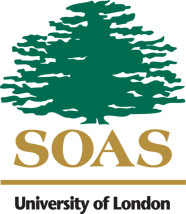Lessons from the International Assessment of Agricultural Science and Technology
In recent years, global assessments have become the focus of considerable international scientific interest and the mobilisation of vast institutional, technical, human and financial resources. These frequently attempt to combine ‘expert-driven assessment’ with processes of ‘stakeholder engagement’ to address critical issues of major international importance.
They are often presented as transparent, objective exercises where the politics of knowledge and debates about the legitimacy, credibility and salience of different points of view are set aside in favour of building a consensus towards scientifically informed policy making. But what happens if the fundamental differences between conflicting visions of the right course of action remain? Can papering over the cracks allow diverse voices and sometimes clashing perspectives to reach agreement on vital issues of global concern? Or do we have to leave behind the exclusivity given to scientifically produced rational knowledge and acknowledge and address the elemental divisions, the positionality of the different players, and the framings that drive their agendas and privilege some viewpoints over others from the very start of these assessment processes?
The gold standard of global assessments is without doubt the International Panel on Climate Change or IPCC, the oldest and best established initiative. The IPCC is a scientific body tasked to evaluate the risk of climate change caused by human activity. The panel was established in 1988 by the World Meteorological Organisation (WMO) and the United Nations Environment Programme (UNEP). In 2007, the IPCC shared the Nobel Peace Prize with Al Gore, former Vice President of the United States, for its pivotal role in proving that warming of the climate system is unequivocal and that most of the observed increase in globally averaged temperatures since the mid-20th century is very likely due to the observed increase in anthropogenic greenhouse gas concentrations.
Notwithstanding the apparent success of the IPCC, its findings through four assessment reports have repeatedly provoked a storm of criticism from global warming sceptics and even some within the climate science fraternity. Opponents assert that most scientists consider global warming ‘unproved’, dismiss it altogether, or decry the dangers of ‘consensus science’. Others maintain that proponents and opponents alike have been stifled or driven underground. As Mike Hulme, former director of the Tyndall Centre for Climate Research and one of the leading figures in climate science wrote in a personal statement on his website: “In recent months I have been chastised for some of my pronouncements on climate change. I have spoken out against the use of exaggerated language in the description of climate change risks; I have spoken about the limits and fragility of scientific knowledge; I have suggested that we should focus on nearer-term policy goals to improve human welfare rather than be so pre-occupied with one large longer-term goal of global climate management. As a consequence I have been accused of burying my head ostrich like in the sand; of undermining the power of science; of lacking passion about ‘solving’ the ‘problem’ of climate change.
Clearly, despite the push for consensus by the IPCC, deep divisions remain in the research community and the wider public on the climate change issue. These reveal how scientific uncertainties are contextualised, communicated and understood by different constituencies with contrasting, sometimes conflicting agendas. Alarmist and fatalistic framings, on the one hand, and those shaped by deep scepticism, on the other, often dominate the scientific and policy discourses on climate change, while more moderate perspectives, particularly those emphasising – i.e., reducing society’s sensitivity to climate change through human agency and empowerment – are largely absent, or at best marginalised.
The Millennium Ecosystem Assessment (MA), launched in 2001, aimed at assessing ecosystem changes over the course of decades, and projecting those changes into the future. From 2001 to 2005, the MA involved the work of more than 1,360 experts worldwide. Their findings provide a state-of-the-art scientific appraisal of the condition and trends in the world’s ecosystems and the services they provide, as well as the scientific basis for action to conserve and use them sustainably. The MA concluded that o ver the past 50 years, humans have changed ecosystems more rapidly and extensively than in any comparable period of time in human history, largely to meet rapidly growing demands for food, fresh water, timber, fiber and fuel. According to the MA, this has resulted in a substantial and largely irreversible loss in the diversity of life on Earth. The changes that have been made to ecosystems have contributed to substantial net gains in human well-being and economic development, but these gains have been achieved at growing costs in the form of: (i) the degradation of many ecosystem services; (ii) increased risks of nonlinear changes; and (iii) the exacerbation of poverty for some groups of people. These problems, unless addressed, will substantially diminish the benefits that future generations obtain from ecosystems. The challenge of reversing the degradation of ecosystems while meeting increasing demands for ecological services can be partially met under some scenarios considered by the MA, but will involve significant changes in policies, institutions and practices that are not currently under way.
It is worth comparing the level of controversy over the climate science assessments of the IPCC with the Millennium Assessment. Relatively speaking, the MA has received far less media coverage (positive or negative) or political interest, even though it has a wider scope and much more sweeping policy implications than the IPCC’s climate science reports. The relative quiescence greeting the MA is owed to its near-complete disconnection from any specific policy proposal analogous to the Kyoto Protocol. Had the MA been connected with an ongoing diplomatic process as is the IPCC and with a proposal for binding international treaty of some kind, it would have been front-page news and the subject of intense controversy in capitals around the world.
From the contrasting experiences of the IPCC and MA, it would appear that the magnitude of scientific uncertainty in policymaking is directly proportional to the political and especially economic stakes involved in the outcomes of global assessments, which means that it is unlikely that legitimate uncertainties of environmental science can ever be definitively resolved to the satisfaction of all scientists, policymakers, civil society actors, industry representatives and other stakeholders. The massive effort at synthesis and consensus will be frustrating to those scientists and other stakeholders who hold heterodox but valid views. To date, most assessment processes have not accommodated or responded to this clash of perspectives, values and agendas very well. It is therefore a valid criticism that the scientists and others participating in each iteration of these assessments have become increasingly self-selected in a manner that overstates consensus and downplays dissent.
IAASTD – Agreeing to Disagree
The International Assessment of Agricultural Science and Technology (IAASTD) is the latest is a long line of high-profile global assessments, one that falls in the ‘controversial’ category on several counts. The origin of the $12 million initiative dates to 2002, when a group of international agricultural biotechnology companies asked the World Bank whether it recommended genetically modified (GM) crops for developing countries. Robert Watson, then the World Bank’s Chief Scientist and a key actor in other global assessments including the IPCC and the MA, and currently the Chief Scientific Adviser for the UK Department for Environment, Food and Rural Affairs (Defra), suggested that the Bank review the entire range of agricultural technologies and policies, convinced that agricultural research should be considered in the context of the broad set of factors shaping agricultural development in the 21 st Century.
Thus began the first major collaboration on a global agricultural science and technology assessment involving international agencies, governments, the private sector and non-governmental organisations. The IAASTD initiative, co-sponsored by multiple international agencies (FAO, GEF, UNDP, UNEP, UNESCO, the World Bank and WHO), also received financial support from the private sector and the Governments of Australia, Canada, Finland, France, Ireland, Sweden, Switzerland, the UK, the USA and the European Commission. It has a multi-stakeholder bureau comprising 30 representatives from governments and 30 representatives from civil society.
Over three years, from 2005-7, the IAASTD evaluated the relevance, quality and effectiveness of agricultural knowledge, science, and technology (AKST), as well as the policies and institutional arrangements in relation to AKST. The final report (comprising a global and five sub-global assessments) is due to be accepted and approved by governments, with support from the sponsoring international agencies and some 50 NGOs, at an Intergovernmental Plenary Meeting from 7-14 April 2008 in Johannesburg , South Africa . The Synthesis Report will present the key findings from all the reports addressing eight thematic issues: bioenergy, biotechnology, climate change, human health, natural resources management, trade and markets, traditional and local knowledge and community-based innovation and women in agriculture.
The original overarching question guiding the IAASTD is a mouthful: “How can we reduce hunger and poverty, improve rural livelihoods, and facilitate equitable, environmentally, socially and economically sustainable development through the generation, access to, and use of agricultural knowledge, science and technology?” To address this multi-dimensional question, the IAASTD adopted a stakeholder (but expert) led scenario approach as its centre-piece, drawing on experiences from IPCC and the MA. Such approaches have become increasingly fashionable, as agencies try to manage uncertain scientific, technological and policy futures. Watson and his team solicited suggestions about what to include in the assessment from over 800 stakeholders representing scientific and agriculture-related organisations around the world. In theory, such an inclusive approach can be a plus, conferring political legitimacy and credibility on a complex assessment process. In practice, it can lead to logjams.
Part of the tension over IAASTD reflects two competing worldviews of agriculture. Some assessment stakeholders and authors stressed the importance of recognising the ‘multi-functionality’ of agriculture, by which they mean that in addition to producing food, farmers have other important roles, such as maintaining the landscape and fostering cultural heritage. This, however, is a highly contentious term, which many non-Europeans view as a just fancy word for ‘protectionism’, particularly those who see agriculture as more of an industrial process than a way of life. Thus, one of the key findings of the IAASTD is that there are diverse and conflicting interpretations of the role of agriculture science and technology in development, which need to be acknowledged and respected. This is not exactly a helpful insight for policymakers trying to decide whether to recommend a particularly controversial approach or innovation, but it does reveal the complexity of stakeholder engagement processes and indicate that consensus can be encouraged, but ultimately not imposed.
It is perhaps not surprising that this massive effort encountered some snags. Some authors of the eight main chapters of the Synthesis Report say that from the start the process was disorganised, lacked direction and suffered from turnover of authors and continual reworking of drafts. Moreover, some teams bogged down in conflicts about ‘hot topics’ such as GM crops or trade liberalisation, with various members charging each other with bias. One contentious chapter, on how to help developing countries generate and adopt agricultural research, was dropped altogether. And halfway through, just before initial results were to be presented in October 2007, the IAASTD bureau decided to eliminate a major modelling exercise which its proponents claimed would have provided insights to help policymakers compare the outcomes of four broad policy scenarios, such as futures with more free trade or green technologies. But various civil society groups objected that the models were not ‘transparent’.
Critics charge that the broad mandate of the IIASTD made conflict inevitable and stunted the assessment’s analytical rigour. On several key issues, consensus proved elusive. Industry scientists and some academics, mainly agricultural economists and plant biologists, believe the assessment was ‘hijacked’ by participants who oppose GM crops and other technologies of industrial agriculture. Conflict erupted in the review process as well, with some scientists and biotechnology industry representatives, such as Deborah Keith of Syngenta, complaining that their comments were not incorporated into later drafts of the chapters because of resistance. As a result, tensions peaked in October 2007 when major biotech companies and GM advocates voted with their feet and pulled out of the process. Their representatives won’t be attending the Jo’burg meeting.
For their part, supporters argue that the IAASTD assessment was a comprehensive and rigorous process, with more than 400 authors involved in drafting the reports, drawing on the evidence and assessments of thousands of experts worldwide. The drafts were subjected to two independent peer reviews by assessors from government, civil society, industry and specialist research institutes.
What is the final result? The IAASTD report proposes a fundamental re-thinking of our approach to AKST and essentially calls for a new paradigm that gives farmers a central role. It recognises that market forces alone cannot deliver prosperity and food security to the poor, and that trade rules unfairly favouring rich countries and multinational corporations must be reformed. Similarly, intellectual property laws need to be reformed to prevent patents on novel crops from stifling new research and agricultural innovation. Finally, the report is critical of the power and resources of the multinational companies that dominate world seed and fertiliser markets.
Key findings of the assessment include:
- Doing more to involve women to advance development and sustainability goals
- Creating opportunities for poor farmers and rural labourers through targeted investments
- Integrating formal, traditional, and community-based knowledge to improve AKST
- Creating space for diverse voices in science and technology policy processes
- Systematically redirecting agricultural development towards agroecological strategies, particularly to realise environmental sustainability
It is notably muted in relation to the claimed benefits of GM crops, highlighting instead the lingering doubts and controversies surrounding their development and use.
The mixed success of the IAASTD suggests that a key challenge for development in an era of globalisation is how collective perspectives, values and outcomes are negotiated across diverse cultural and institutional settings at an international level. As Janice Jiggins, one of the contributing authors to the IAASTD, observed in a recent article in New Scientist, “The IAASTD process has explicitly value-laden goals: to reduce hunger and poverty; to improve rural livelihoods; and to facilitate equitable, environmentally, socially and economically sustainable development. These demand a unique attempt at joined-up thinking, synthesising knowledge and experience from domains that are normally kept firmly separate. This in turn was almost certain to make dialogue exceptionally difficult – and so it proved.”
If nothing else, the IAASTD should bring more attention to the plight of the rural poor and the chronic underinvestment in agricultural research. Whether it is able to do more than that – to, for example, spark debate on the degree to which agricultural science and technology is meeting the needs of the poor or whether everyone gains from free trade – remains to be seen.
What is evident is that, in future, organisers of expert-driven global assessments will need to be more mindful of how the sometimes competing agendas and conflicting perspectives of different ‘epistemic communities’ can be integrated, obscured or excluded through these complex, highly political processes of scientific review and stakeholder engagement. They will also have to confront how dispute and dissent are dealt with among the various players, particularly given the power differentials involved. Furthermore, they will have to openly acknowledge how the design and deployment of particular tools and methods (from formal meetings and conferences to the use of scenario and computer modelling exercises and from the composition and coordination of writing teams to the terms of reference of review panels) influence the interactions of the actors and, ultimately, the outcome of the assessment process itself. In short, they will have to do away with the smokescreen of ‘neutrality’ and ‘objectivity’ and acknowledge the politics of knowledge and meaning that shape these assessment agendas.
John Thompson – April 2008
Links
International Panel on Climate Change
Millennium Ecosystem Assessment (MA)
International Assessment of Agricultural Science and Technology (IAASTD)

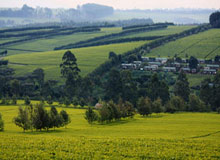
 A major focus of our work on Kenya explores in some depth alternative policy prescriptions that have been proposed and/or are being implemented for Kenyan agriculture.
A major focus of our work on Kenya explores in some depth alternative policy prescriptions that have been proposed and/or are being implemented for Kenyan agriculture. The paradox facing agricultural policy in Ethiopia was neatly encapsulated in this statement by Prime Minister Meles Zenawi, in 2000: “The agricultural sector remains our Achilles heel and source of vulnerability. … Nonetheless, we remain convinced that agricultural based development remains the only source of hope for Ethiopia.” The reality is that most Ethiopians continue to struggle to make their living from smallholder farming, despite low returns, high risks, and the evident inability of agriculture to provide even a reliable subsistence income, let alone a ‘take off’ to poverty reduction and sustainable economic growth.
The paradox facing agricultural policy in Ethiopia was neatly encapsulated in this statement by Prime Minister Meles Zenawi, in 2000: “The agricultural sector remains our Achilles heel and source of vulnerability. … Nonetheless, we remain convinced that agricultural based development remains the only source of hope for Ethiopia.” The reality is that most Ethiopians continue to struggle to make their living from smallholder farming, despite low returns, high risks, and the evident inability of agriculture to provide even a reliable subsistence income, let alone a ‘take off’ to poverty reduction and sustainable economic growth. A major focus of our work on Ethiopia explores in some depth alternative policy prescriptions that have been proposed and/or are being implemented for Ethiopian agriculture.
A major focus of our work on Ethiopia explores in some depth alternative policy prescriptions that have been proposed and/or are being implemented for Ethiopian agriculture.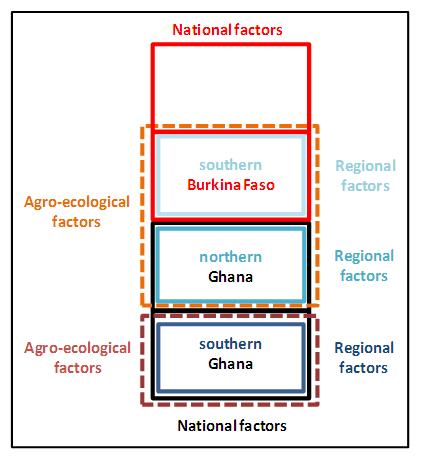
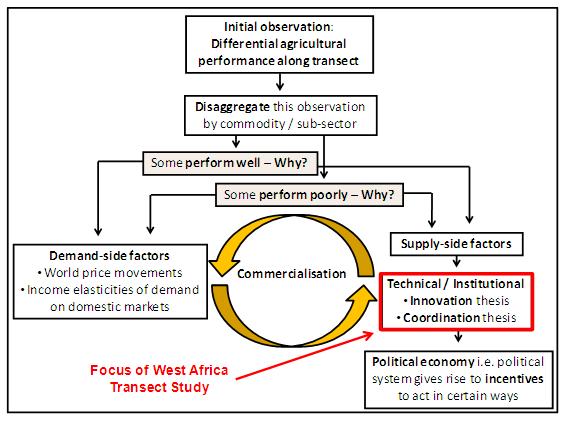 Logic of the FAC West Africa transect study
Logic of the FAC West Africa transect study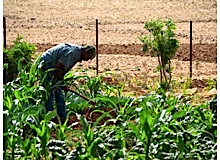 ‘Small farmers can be a driving force in cutting hunger and poverty worldwide’ was a key message to G8 leaders from development specialists at The Future of Small Farms research workshop held in Wye in June 2005. Participants at the workshop, jointly organised by IFPRI, ODI and Imperial College London, concluded that investment in small farm agriculture could help to raise the rural poor out of poverty and catalyse wider economic growth.
‘Small farmers can be a driving force in cutting hunger and poverty worldwide’ was a key message to G8 leaders from development specialists at The Future of Small Farms research workshop held in Wye in June 2005. Participants at the workshop, jointly organised by IFPRI, ODI and Imperial College London, concluded that investment in small farm agriculture could help to raise the rural poor out of poverty and catalyse wider economic growth.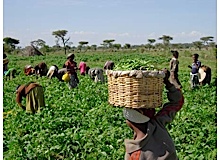 FAC member John Thompson reflects on the 2008 World Food Summit, arguing that any solutions will require the international community to move beyond simple, short-term technical or market ‘fixes’ and address the political economy of food and agriculture.
FAC member John Thompson reflects on the 2008 World Food Summit, arguing that any solutions will require the international community to move beyond simple, short-term technical or market ‘fixes’ and address the political economy of food and agriculture.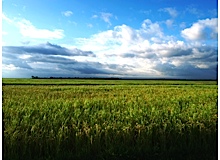
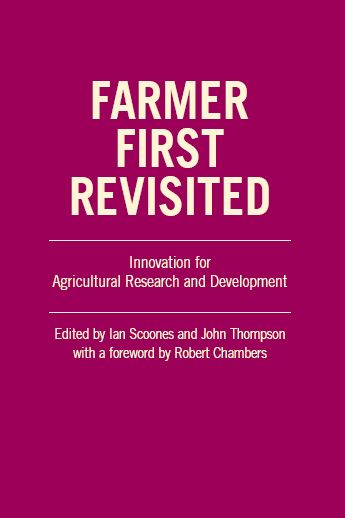 Agriculture is an urgent global priority and farmers find themselves in the front line of some of the world’s most pressing issues—climate change, globalization and food security. Twenty years ago, the Farmer First workshop held at the Institute of Development Studies, University of Sussex, launched a movement to encourage farmer participation in agricultural research and development (R&D), responding to farmers’ needs in complex, diverse, risk-prone environments, and promoting sustainable livelihoods and agriculture.
Agriculture is an urgent global priority and farmers find themselves in the front line of some of the world’s most pressing issues—climate change, globalization and food security. Twenty years ago, the Farmer First workshop held at the Institute of Development Studies, University of Sussex, launched a movement to encourage farmer participation in agricultural research and development (R&D), responding to farmers’ needs in complex, diverse, risk-prone environments, and promoting sustainable livelihoods and agriculture.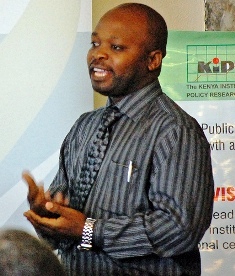 Blessings Chinsinga is a Senior Lecturer teaching Development Administration, Public Policy Analysis and Institutions and Development at the Department of Political and Administrative Studies,Chancellor College,
Blessings Chinsinga is a Senior Lecturer teaching Development Administration, Public Policy Analysis and Institutions and Development at the Department of Political and Administrative Studies,Chancellor College,  Gem Argwings-Kodhek is a Senior Research Fellow at
Gem Argwings-Kodhek is a Senior Research Fellow at  John Omiti is a Senior Policy Analyst and Head of Productive Sector Division at the
John Omiti is a Senior Policy Analyst and Head of Productive Sector Division at the 